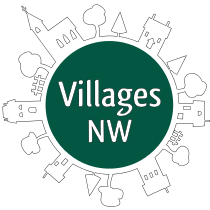by Viki Eierdam
– The Messenger : Original story link here
Aging in place has been a catch phrase for several years, but it’s not always clear what that looks like or, if it is, how to go about doing so.
Hoping to be operational by the middle of 2018, Villages Clark County is bringing an exciting and proven concept to the area with the goal of helping boomers and seniors live independently for as long as possible.
An offshoot of a larger movement, Villages comprises volunteers and members. Villages thoroughly vets its volunteers by conducting background checks and training, then provides services to members that include household tasks such as minor repairs and grocery shopping, technological support such as how to operate an iPad or set up a new phone and errands like picking up prescriptions or driving a member to a medical appointment or social engagement.
John Chapman, co-chair of Villages Clark County, said: “Independence is a big thing among boomers. Almost 90 percent of older adults want to age in their own homes and neighborhoods, but about 75 percent haven’t made any plans to do so.”
First Villages
The first Villages was begun in 2001 in Beacon Hill, Massachusetts, by a small group of innovative seniors who recognized that, to remain in their beloved Boston neighborhood, they would need to pool their abilities and resources. Sixteen years later and 400 members strong, Beacon Hill spawned a movement that has spread across the United States. According to the most recent information, there are more than 200 open Villages and more than 150 in development.
VillagesNW, a Portland-based nonprofit organization dedicated to spreading grassroots villages throughout the metro area, is part of a hub-and-spoke model similar to the way major air transportation is designed. In this case, VillagesNW is the hub for seven villages in the greater Portland-Vancouver metro area that are the spokes. VillagesNW handles standardized recordkeeping, grant applications, nonprofit legal requirements, liability insurance and other necessary functions, while the spokes fit neatly into one 501c3 status and are left to focus their energies on the volunteers and members of their immediate village.
Members determine success
Each village is planned around a geographic area, and the services provided are determined by the members of that village. Once established, when a member has a need that the village can service, they call a central number and a volunteer is assigned to help. No two villages are alike, although many similarities may exist. Instead of social services and programs, members have control and final say for the blueprint of their village.
“Even if the government could provide all the services seniors need, the burden on taxpayers is unbelievable. We (Villages) take the burden off government and have more autonomy and flexibility as a result,” Chapman said.
Volunteers can be members and members can volunteer, but reciprocity is not a requirement. So far, developing villages have engaged the community and received tremendous support. Lyn Trainer, board member for VillagesNW, shared that the startup goal for each village is 30 members and, as of the end of February, there were just over 230 members among four villages and approximately 300 volunteers eager to offer their time across seven villages.
Trickle-down effect
The push to keep seniors in their own homes has a trickle-down effect on the community and the economy. Natalie Galucia, executive director for the Village to Village Network, said older adults continue to use the local businesses that they have frequented their whole lives, often have the time to give back and volunteer in a variety of organizations in their communities, start food banks and shelters, and donate their time to organizations like Habitat for Humanity.
On the flip side, the impact for seniors forced to move out of their neighborhood ranges from social to physical and even psychological issues.
“Just as in other stages of life, there are a lot of changes as one grows older: retirement, loss of friends and family, possibly disease and/or not being able to drive anymore, to name a few. Once you add in moving from the home and community that you’ve possibly known your whole life, this can really be a major adjustment,” Galucia said.
In order to be successful, Villages Clark County needs a network of volunteers as well as members. Some can be found in the member base, but younger adults are needed for physical tasks as well as social engagement.
According to Trainer, some of their volunteers have first-hand experiences with family members in need of assistance or they live away from aging parents who need assistance and the adult children are thankful for caring neighbors and want to give back in their own communities to honor that.
Chapman added that it’s not only seniors being serviced by Villages. Although age cutoffs are decided village by village, people with disabilities over the age of 18 can become members with certain basic considerations.
“Members must live independently and make their own decisions. There can be no known health or safety issues in the home and they must meet their personal care needs through self-care or a caregiver,” Chapman said.
For more information about Villages Clark County or to become a volunteer or help with outreach, go to www.VillagesClarkCounty.org.
